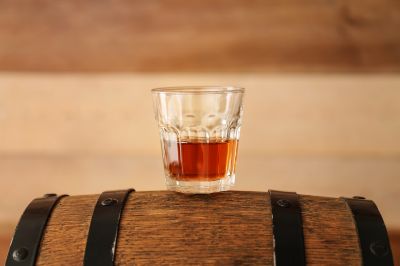Barrel aging is an essential process in creating some of the world's finest spirits and wines. It imparts complex flavors and aromas that can only be achieved through time and exposure to the unique characteristics of oak. When it comes to aging in barrels, size matters. In this article, we'll explore the impact of barrel size on aging time, focusing on small 1, 2, 3, 5, 10, and 20 liter barrels and comparing their surface area to volume ratio to large barrels.
Small barrels, typically defined as those with a capacity of 1-20 liters, have become increasingly popular in recent years. They offer several advantages over larger barrels, including faster aging and greater flexibility in blending and experimentation. However, they also have some limitations, including increased evaporation and a more limited flavor profile compared to larger barrels.
One of the key factors that impact aging time in barrels is the surface area to volume ratio. Small barrels have a greater surface area to volume ratio compared to large barrels, which means that the alcohol comes into contact with a greater amount of wood per unit of liquid. This increased contact accelerates the aging process and allows for a more rapid extraction of flavors and aromas.
For example, a 1-liter barrel has a surface area to volume ratio of about 6:1, which is six times greater than that of a 225-liter barrel. This means that the same amount of alcohol aged in a 1-liter barrel will come into contact with six times more wood than it would in a 225-liter barrel. As a result, the optimal aging time for a 1-liter barrel can be as short as 3-6 months, while the same alcohol aged in a 225-liter barrel might take 3-5 years to achieve the same level of flavor extraction.
Similarly, a 2-liter barrel has a surface area to volume ratio of about 4:1, a 3-liter barrel has a ratio of about 3:1, a 5-liter barrel has a ratio of about 2:1, a 10-liter barrel has a ratio of about 1.2:1, and a 20-liter barrel has a ratio of about 0.6:1. As the size of the barrel increases, the surface area to volume ratio decreases, which means that the aging process is slower and more subtle.
While small barrels offer faster aging and more control over the aging process, they also have some drawbacks. One of the most significant is evaporation, which can be as high as 10-15% per year in small barrels. This means that the alcohol loses volume and concentration over time, which can impact the flavor and overall quality of the final product. Additionally, small barrels may not provide as complex or nuanced a flavor profile as larger barrels, as the increased surface area can result in a more dominant oak flavor.
In contrast, large barrels, typically defined as those with a capacity of 225 liters or more, have a lower surface area to volume ratio, which means that the aging process is slower and more subtle. This allows for a more complex and nuanced flavor profile, as the alcohol has more time to interact with the oak and other factors that impact flavor, such as temperature and humidity. However, the slower aging process also means that it can take years or even decades to achieve the desired flavor profile.
In conclusion, the optimal aging time in small 1, 2, 3, 5, 10, and 20 liter barrels depends on a variety of factors, including the type of alcohol being aged, the desired flavor profile, and the surface area to volume ratio of the barrel. While small barrels offer faster aging and more control over the aging process, they also have some limitations, including increased evaporation.

